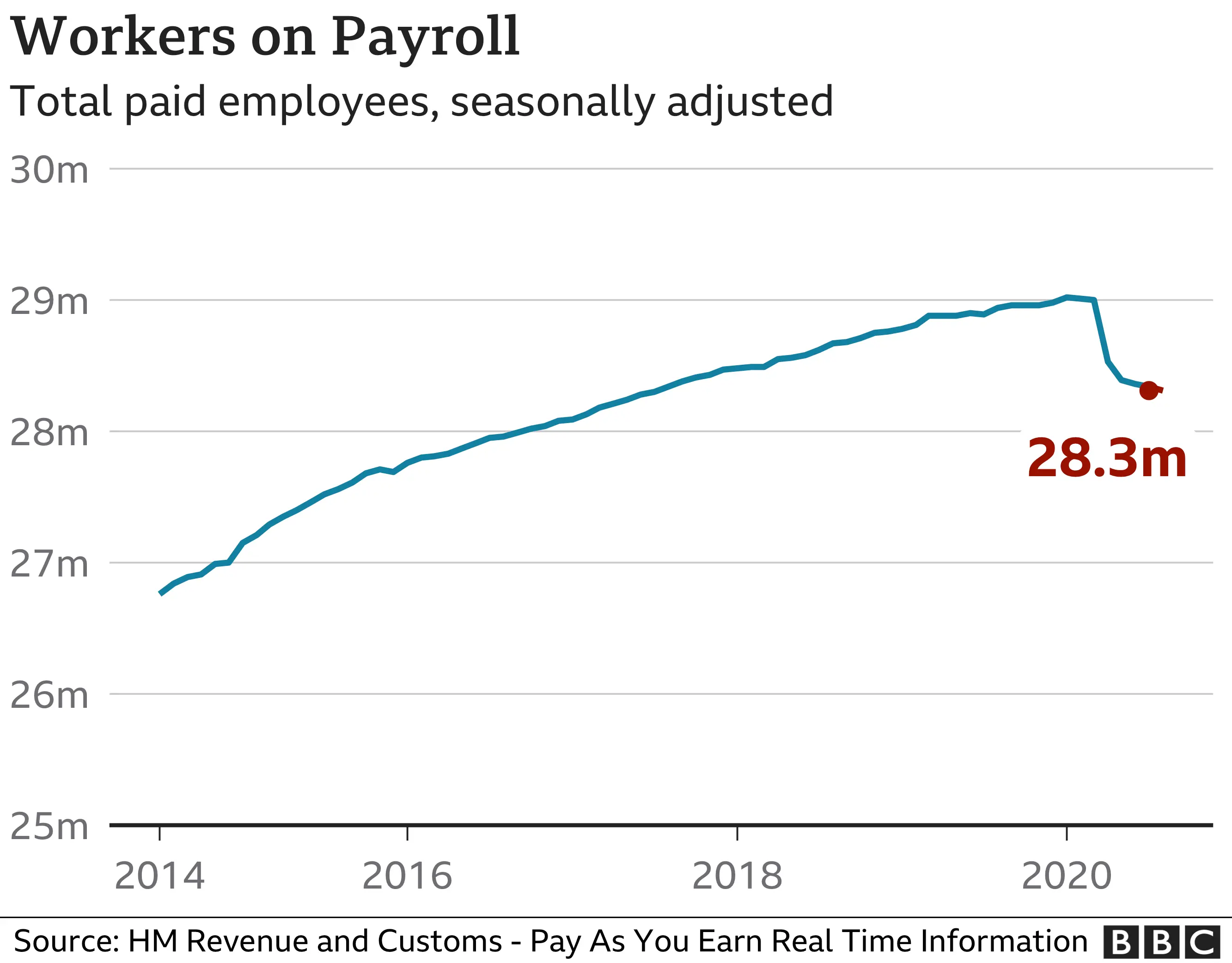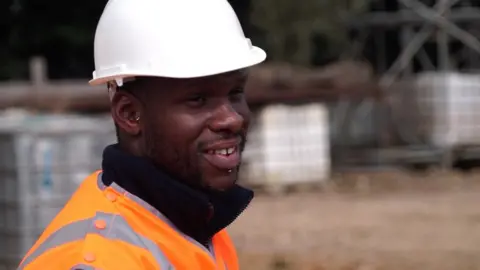Young people hit as unemployment rate rises
 gilaxia
gilaxiaThe UK unemployment rate has risen to its highest level for two years, official figures show.
The unemployment rate grew to 4.1% in the three months to July, compared with 3.9% previously.
Young people were particularly hard hit, with those aged 16 to 24 suffering the biggest drop in employment compared with other age groups.
Chancellor Rishi Sunak said "helping people get back into, or finding new work" was his "number one priority".
But in a briefing to the Cabinet on the economy, he reaffirmed a decision not to extend the government's Job Retention Scheme which ends on 31 October.
Mr Sunak told colleagues that "indefinitely keeping people out of work is not the answer", but added that he would "be creative" in finding ways of helping people.
New data from the Office for National Statistics showed that firms continued to remove staff from payrolls as they prepare for the end of the scheme.
Some 695,000 UK workers disappeared from the payrolls of British companies since March, when the coronavirus lockdown began.
Meanwhile, there were 156,000 fewer young people in employment in the three months to July compared to the previous quarter.
"Generation Z has been hit particularly hard by the economic fall out of the pandemic as the retail and hospitality sectors, which have taken such a battering, are often relied on to help school and university leavers find an entry-level job, and get started in the world of work," said Susannah Streeter, senior investment and markets analyst at Hargreaves Lansdown.
"Sadly, this may not just be a bump in the road but could have long term consequences for the path of their careers."
The government has launched a scheme called Kickstart to create work placements for unemployed young people. Employers will be paid £1,500 for every 16-24 year old they train.

How is the furlough scheme affecting employment?
The unemployment rate has risen slightly, but experts say it does not yet fully illustrate the full impact of the economic crisis on jobs, with the furlough scheme helping keep the numbers down.
The government's Job Retention Scheme begins tapering off this month before ending on 31 October.
Under the scheme - which has seen 9.6 million people furloughed - the government initially paid 80% of a person's wages up to £2,500 a month.
Since the start of September, the state's contribution has fallen to 70%, with employers expected to make up the remainder of pay before the scheme ends on 31 October.

What are the experts saying?
Paul Dales, chief UK economist at Capital Economics research group, said he expected that "employment will fall more sharply and unemployment will increase more quickly as the furlough scheme continues to unwind and ceases at the end of October".
ONS director of economic statistics Darren Morgan said that there had been some signs that the economy "reopened" in July as businesses including restaurants, pubs and hairdressers were allowed to trade again.
As people returned to work from being paid under the furlough scheme, the rate of decline in employee pay growth slowed.
Meanwhile, job vacancies in the three months to August jumped by 30% to 434,000.
However, the number of vacancies is still significantly below pre-virus levels.
Mr Morgan said: "With the number of employees on the payroll down again in August and both unemployment and redundancies sharply up in July, it is clear that coronavirus is still having a big impact on the world of work," he said.
What has the political reaction been?
Mr Sunak told colleagues that it was important to remember that the "significant support" that had already been put in place had "come at a cost" and the economy was still nowhere near pre-Covid levels.
Labour leader Sir Keir Starmer - addressing the TUC conference by video link, as he is self-isolating - called for an extension of part-time working as furlough comes to an end, with rewards for employers who keep people on, though he gave no detail of these rewards.
He also called for targeted support for vulnerable sectors such as hospitality and aviation.
He urged ministers to "outlaw fire-and-rehire tactics" where workers are made redundant, then taken on in worse conditions.

What happens next?

Unfortunately, this is the start of the official unemployment numbers starting to go up, just ahead of the furlough scheme being phased out.
While the headline unemployment rate went up to 4.1%, this is still low by historic and international standards.
Digging a little deeper, however, shows a more considerable increase of 0.5% to 4.4% solely in July. And in the final week of July, it increased to 4.8%.
This is the start of what economists and academics expect will be a sustained rise. The good news for now is that so far, the vast bulk of previously furloughed workers appear to have gone back to their jobs.
The other very notable feature is that the overall three-month average rise in unemployment, while still small, was in large part the result of young people losing their jobs.
Redundancies also went up to their highest level since the aftermath of the financial crisis. Employment remained at a record, however, and hours worked and vacancies showed a small recovery from massive falls during lockdown.
So the climb has started slowly, but the concern now is, where exactly does this go?

How do those affected feel?

Orrean Jacob recently lost the job he had done for nine years, working at the Mini car factory in Oxford as an agency worker.
"They decided to let people go, and I was one of them," he says. Hundreds of workers at the plant were affected.
"It really hurt. When you go to work, it's not just about the money or pay. It's about making something of yourself, making friends and making connections."
Although he found himself in a similar position to many others during the pandemic, a phone call with a friend presented him with an opportunity. They recommended he get in touch with the HS2 rail project about their one-week training programmes.
By the end of the following week, he was fully licensed to be on-site and drive a forklift, having completed a course worth about £1,000 with one of HS2's sub-contractors.
"This was just the push I needed in the right direction - to find something new, to find a new path to pursue because the other one clearly wasn't working."

Have you lost your job as a result of the coronavirus pandemic? Share your experiences by emailing [email protected].
Please include a contact number if you are willing to speak to a BBC journalist. You can also get in touch in the following ways:
- WhatsApp: +44 7756 165803
- Tweet: @BBC_HaveYourSay
- Please read our terms & conditions and privacy policy
If you are reading this page and can't see the form you will need to visit the mobile version of the BBC website to submit your question or comment or you can email us at [email protected]. Please include your name, age and location with any submission.
